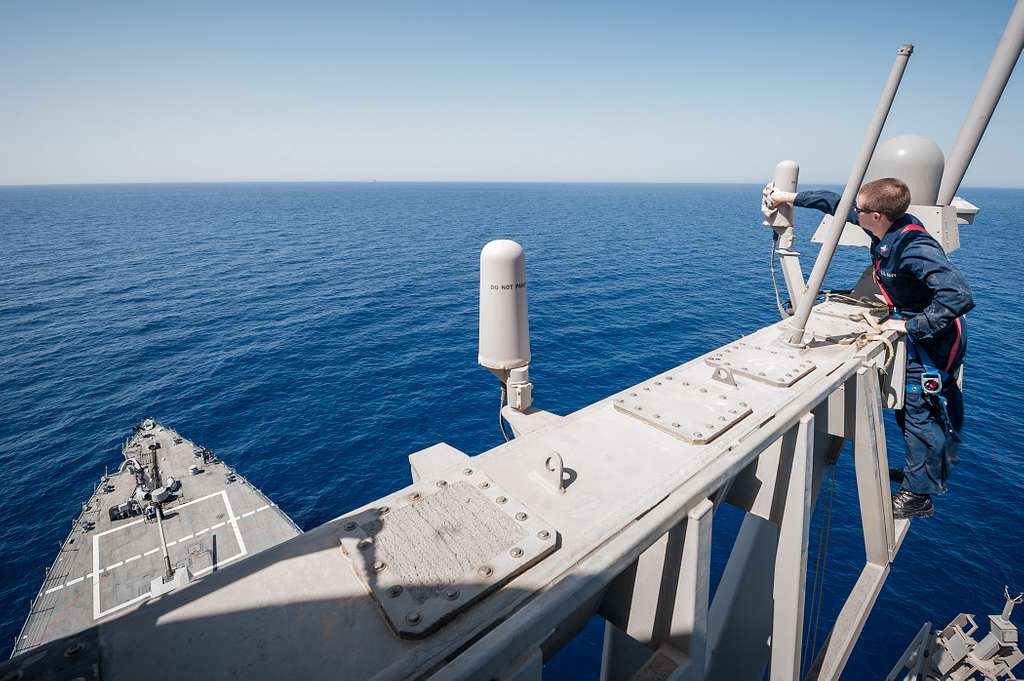Let’s face it, when you envision a ship, those horizontal poles jutting out from the masts probably aren’t the first things that spring to mind. We usually picture billowing sails or a fearless captain at the helm. But these poles, known as naval yardarms, were far more than just places to hang a flag. They were essential components of a ship’s design, playing a pivotal role in how ships sailed and engaged in warfare at sea.
The Muscle and Might of the Yardarm
Think of yardarms as the powerful arms of a giant. Their primary function was to spread the massive square sails that propelled large sailing ships. Without yardarms extending outward, the sails wouldn’t capture enough wind to move these heavy vessels. Imagine trying to move a house with just a bedsheet—you’d need some serious leverage!
[https://www.lolaapp.com/ho-chi-minh]
But yardarms were more than just sail supports. They were also key players in naval warfare. Picture this: cannons booming, muskets firing, and high above the fray, sailors perched on the yardarms had an optimal position to unleash fire upon enemy ships. It was a dangerous job, being so exposed, but those sailors on the yardarms were vital to a ship’s defense and attack.
However, life on a ship wasn’t all glory and battles. The yardarms also played a darker role in naval discipline. Sadly, they were often the locations where punishments were carried out. Floggings, a brutal form of whipping, or even worse, keelhauling (where a sailor was dragged under the ship’s hull), and hangings were grim realities of life at sea. They stand as chilling reminders of the harsh conditions sailors faced centuries ago.
From Weapons Platform to Communication Hub
As technology advanced and warfare changed, the role of the yardarm shifted. Instead of serving primarily as weapons platforms, they became crucial for communication. Flags of various colors and patterns, signal lamps, and semaphore (a system using flags to send messages), all relied on the yardarm’s height to transmit messages between ships. It was like the maritime version of texting, only considerably slower!
Today, you won’t see battleships armed with cannons on their yardarms. You’re more likely to spot them on traditional sailing ships, meticulously maintained replicas of historic vessels, or even on some recreational boats. While their original purpose might seem like a relic of the past, yardarms still possess a certain beauty and remind us of the grand age of sail.
[https://www.lolaapp.com/lieserl-maric]
A Closer Look: Crafting the Yardarm
Most yardarms were crafted from robust, sturdy wood, typically chosen for its flexibility and resilience against the harsh sea environment. Today, you might find them made from lighter and more durable materials like aluminum or steel. Regardless of the material, they were meticulously crafted to withstand incredible forces from the wind and the ship’s movements.
Attaching a yardarm to the mast was no simple task. Strong metal bands or thick ropes called slings were used to keep them securely fastened. But they didn’t just fix them in a single position. Sailors needed to adjust the height and angle of the yardarms to optimally catch the wind. For that, they employed a system of ropes called lifts and braces—sort of like adjusting a gigantic set of blinds, but far more complex! And to secure all the rigging (the ropes that controlled the sails), they used specialized fittings called yardarm irons.
Yardarms Today: Echoes of a Bygone Era
Even though their primary function of controlling sails has become less common, yardarms haven’t vanished entirely. Those majestic tall ships you see sailing today, whether training vessels or replicas of historic ships, still utilize yardarms just as they did centuries ago. It’s remarkable to think that those wooden poles still play a crucial role in teaching people the art of traditional sailing.
[https://www.lolaapp.com/what-did-mathieu-ngirumpatse-do-during-rwandan-genocide]
And what about those sleek, modern sailboats dotting harbors today? You might be surprised to learn that they, too, often have yardarms! While they might not be used to control massive sails anymore, they frequently serve as a place to fly flags, adding a touch of nautical flair.
More than Meets the Eye: Windows to the Past
Beyond their practical uses, yardarms offer a unique glimpse into the past. Consider the sailors who climbed that rigging, working high above the deck in all kinds of weather. They were skilled craftsmen, fearless adventurers, and sometimes, tragically, victims of harsh punishments. Their stories are woven into the very fabric of those wooden beams.
As we delve deeper into naval history, we discover differences in how yardarms were designed and used across various cultures and time periods. The shape, size, and even the materials used all provide clues to how shipbuilding evolved over time. It’s like a global puzzle, with each yardarm adding a piece to the grand tapestry of maritime history.
And who knows what the future holds? Innovations in materials and rigging are always being developed. Perhaps we’ll see new, lighter, and even stronger yardarms emerge, blending ancient techniques with cutting-edge technology. We might even find ways to build them more sustainably, using eco-friendly materials and methods.
So, the next time you see an image of a ship, take a closer look at those horizontal poles projecting from the masts. They are not just naval yardarms—they are silent witnesses to centuries of maritime history, holding within them tales of adventure, hardship, ingenuity, and the enduring human fascination with the sea.
What is a yardarm in the navy?
A yardarm is the very end of a yard, which is a horizontal spar (a pole) attached perpendicularly to a mast of a square-rigged sailing ship. It’s essentially the outer tip of this “arm” extending from the mast.
Key Functions of a Yardarm:
- Sail Control: The yardarm is where the top edge of a square sail is attached. By adjusting the angle of the yardarm (and therefore the sail) using braces (ropes), sailors could control the ship’s speed and direction in relation to the wind.
- Strategic Vantage Point: During naval battles, sailors would climb to the yardarms to gain a height advantage over enemy ships. This allowed them to:
- Fire muskets or cannons down on enemy decks.
- Get a clearer view of the battlefield for better tactical awareness.
- Discipline and Punishment: In a darker aspect of naval history, yardarms were also used as places of punishment. Sailors found guilty of offenses might be:
- Flogged (whipped) while tied to the yardarm
- Hanged from the yardarm, with their bodies left as a grim warning to others
Relevance Today: While modern navies no longer use square-rigged ships, the term “yardarm” remains a significant part of naval terminology. It symbolizes an era of maritime history when ships relied on wind power and the bravery of sailors who manned the rigging high above the deck.
What is the yardarm on a ship?
To understand the yardarm, you first need to picture a sailing ship’s mast – that tall, vertical pole. Now, imagine a strong, horizontal spar attached to it, like an arm stretching out. That’s the yard. The yardarm is the very end of that horizontal spar, furthest from the mast. They were essential on square-rigged ships, which were the most common type of large sailing vessels for centuries.
Here’s why yardarms were so important:
- Sail Power: Those big, rectangular sails that defined those old-time ships? They needed a way to catch the wind from different directions. That’s where the yardarms come in. They acted like extensions, allowing sailors to hoist, lower, and angle the sails to capture the wind just right, propelling the ship forward.
- Tactical Advantage: Imagine a fierce naval battle raging. Cannons roar, muskets fire, and where do you think those sailors positioned themselves for the best shot? You guessed it – up on the yardarms! These high vantage points gave them a clear line of fire against enemy ships, making the yardarm surprisingly important in naval warfare.
- Communication Central: And when it came to communication, yardarms were the original message boards! Sailors would use them to hoist flags, lanterns, or semaphore flags, sending signals to other ships or back to shore. Think of it like a maritime version of smoke signals.
While they might seem like simple pieces of wood, yardarms were essential for sailing, fighting, and even chatting back in the day. Even today, you’ll still see them on traditional sailing ships, a nod to the ingenuity of early seafaring and a reminder of the days when these wooden arms ruled the waves.
What is the yardarm of a pirate ship?
On a pirate ship, the yardarm served the same essential functions as on any other square-rigged sailing ship, but it also took on a particularly menacing symbolism.
- Controlling the Seas: For pirates, speed and agility were crucial for chasing down prizes and escaping the authorities. The yardarms, responsible for manipulating the sails, were essential for these maneuvers.
- A Pirate’s Perch: During raids, pirates would often climb the rigging and position themselves on the yardarms. This elevated position gave them a strategic advantage:
- A clear line of fire for muskets and pistols.
- The ability to rain down chaos and terror upon the decks of their targets.
- A prime location to board enemy ships by swinging across on ropes.
- The Gallows at Sea: Perhaps most chillingly, the yardarm frequently served as a place of swift and brutal punishment. Pirates were known for their strict codes of conduct, and the yardarm became a symbol of their ruthlessness. Offenders might be hanged from the yardarm, their bodies left to swing as a warning to the rest of the crew.
The yardarm of a pirate ship, therefore, represented not only a tool of navigation and warfare but also a chilling reminder of the harsh realities of life under the black flag.
What does the sun be over the yardarm mean?
“The sun is over the yardarm” is a nautical phrase that’s deeply rooted in maritime tradition. While its origins are a bit hazy, it’s generally understood to signal a time when it’s socially acceptable, even encouraged, to have an alcoholic drink.
Here’s a deeper dive into its meaning:
- The Literal Interpretation: Imagine yourself on a ship, the sun slowly climbing the sky. “Sun over the yardarm” literally refers to the moment when the sun has risen high enough to be visible above the yardarm (that horizontal pole on the mast). This usually occurred around midday or early afternoon.
- Naval Roots: It’s believed that the phrase might be connected to the Royal Navy’s tradition of issuing a daily rum ration to sailors. The timing of this ration might have coincided with the sun being “over the yardarm,” solidifying the association.
- Modern Usage: Today, the phrase has sailed beyond its nautical origins and is often used playfully as a justification for enjoying a drink, regardless of the actual time.
So, next time you hear someone say, “The sun’s over the yardarm!”, they’re probably not checking their sextant. It’s more likely a light-hearted invitation to relax, unwind, and perhaps enjoy a beverage or two.









